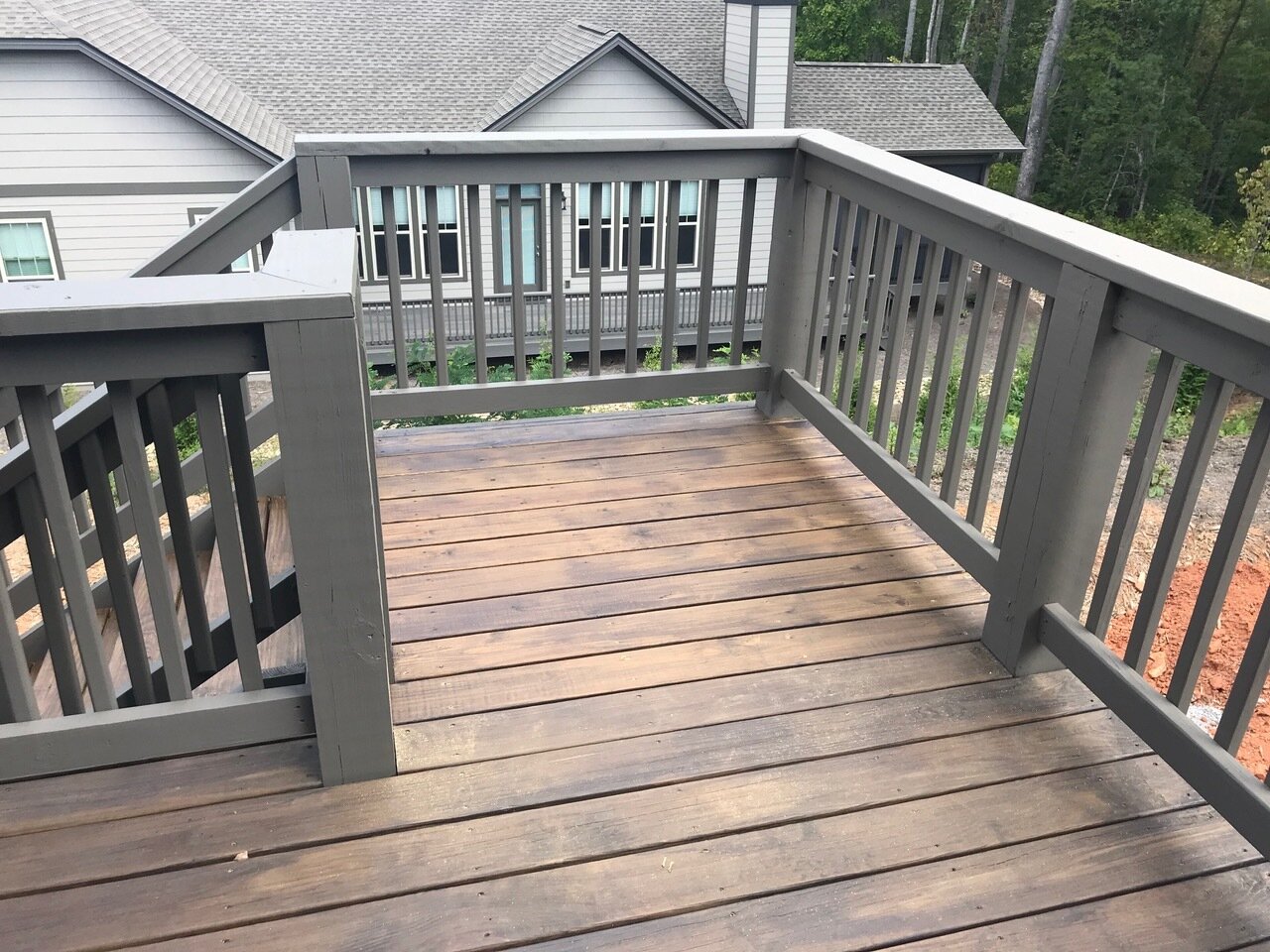Deck Staining Wonders: Transforming Your Outdoor Sanctuary
Wiki Article
Selecting the Right Spot for Your Fence: Tips and Factors To Consider
When it comes to maintaining and improving the look of your fence, picking the best discolor is crucial. We will discover the different kinds of fencing spots, variables to consider before selecting a stain, ideas for preparing your fence for staining, and the differences in between water-based and oil-based spots. Additionally, we will certainly dig into picking the ideal stain shade to enhance your fence and enhance your exterior area.Understanding Different Types of Fencing Spots

On the various other hand, water-based spots are made from acrylic or latex and provide a much more subtle shade to the timber. Water-based stains are much easier to clean up and have a much faster drying out time contrasted to oil-based stains.
Choosing between water-based and oil-based spots depends upon numerous elements, consisting of personal choice, the wanted look, and the degree of maintenance required. Oil-based discolorations are recommended for surround high-traffic areas or those regularly revealed to severe weather. fence staining and sealing. Water-based stains, on the various other hand, are a prominent choice for surround residential locations where appearance and ease of usage are very important
When selecting the best stain for their fence,Comprehending the differences between oil-based and water-based spots assists homeowners make an educated decision. Thinking about the certain needs of the fence, such as its place, exposure to sunlight, and preferred visual, will certainly ensure that the selected discolor provides resilient defense and improves the overall appeal of the fence.
Elements to Think About Prior To Choosing a Discoloration

Different kinds of timber absorb stains differently, resulting in differing levels of color intensity and resilience. Furthermore, certain woods may be a lot more prone to concerns like rot or insect invasion, which might affect the choice of stain to shield and maintain the fencing.
The climate and weather in your location need to also be taken into consideration. You may require a stain that offers extra security versus moisture and UV rays if you live in a location with severe wintertimes or high humidity. If your fencing is revealed to direct sunshine for lengthy durations, a discolor with UV preventions can assist protect against fading and staining.
Last but not least, it's vital to consider your wanted visual. Various stains provide different shades and finishes, allowing you to tailor the appearance of your fence (fence staining and sealing). Think about the overall design and style of your home, along with any kind of neighborhood laws or house owner association guidelines that may determine the acceptable stain shades
Tips for Preparing Your Fence for Staining
To prepare your fencing for discoloration, beginning by completely cleaning the surface making use of a moderate cleaning agent and a stress washing machine or scrub brush. Cleaning the fencing is a vital step as it removes dirt, crud, and any previous layers that may interfere with the staining process. Begin by wetting the go now fencing with water and after that apply a moderate detergent using a scrub brush or a pressure washer with a low-pressure setting. Rub the surface area carefully, paying additional focus to areas with stubborn spots or mold. Wash the fencing completely with tidy water to get rid of all traces of cleaning agent.This step is vital as discoloring a damp or moist surface can lead to bad adhesion and an irregular finish. Make certain that the fencing is completely dry before proceeding with the staining procedure.
Prior to discoloration, inspect the fencing for any type of damages, such as loose boards or nails. This product helps to open up the timber pores, enabling the discolor to permeate extra effectively and evenly.

Comparing Oil-Based and Water-Based Spots
When choosing a tarnish for your fencing, it is necessary to compare the attributes and benefits of water-based and oil-based spots. Both sorts of stains have their very own benefits and factors to consider, so it is vital to comprehend the distinctions in between them.Oil-based spots are known for their sturdiness and resistance to use and tear. In addition, oil-based stains often tend to last longer than water-based stains, making them a prominent selection for fencings.
On the other hand, water-based spots are more eco friendly and less complicated to cleanse up. They might not supply the exact same degree of security as oil-based spots, especially in severe climate problems.
Ultimately, the option between water-based and oil-based discolorations relies on your specific requirements and choices. Think about variables such as resilience, environmental influence, and simplicity of application when making your decision. Consulting with an expert or looking for recommendations from specialists can also assist make certain that you choose the ideal stain for your fence.
Selecting the Right Discoloration Color for Your Fencing
The option of a suitable discolor shade for your fence is an important facet of enhancing its aesthetic charm and enhancing the overall style of your outside space (fence cleaning). The best stain shade can transform a level, regular fence right into a striking focal point that adds deepness and character to your propertyWhen selecting a stain color for your fencing, it is very important to take into consideration the style and style of your home. If you have a conventional or timeless style home, earthy tones such as neutrals and browns can create a cozy and welcoming look. On the various other hand, if you have a modern or modern home, you could think about choosing bold and vivid colors that make a declaration.
Another aspect to consider is the natural environments of your residential or commercial property. If you have a whole lot of greenery, a discolor color that enhances the natural landscape, such as eco-friendlies or crimsons, can develop a natural and unified look.
Furthermore, it deserves taking into consideration the maintenance required for different discolor shades. Lighter shades tend to show dirt and use more easily, while darker colors can conceal imperfections and require much less constant touch-ups.
Inevitably, the selection of tarnish shade for your fencing must show your personal style and preferences - fence staining and sealing. Put in the time to speak with and check out various alternatives with professionals if needed, to guarantee that you choose the excellent tarnish color that enhances the charm and charm of your fencing
Verdict
Finally, when it pertains to picking the right stain for your fence, it is essential to comprehend the different sorts of spots offered and think about aspects such as longevity and wanted look. Preparing the fencing effectively prior to discoloration is vital for attaining ideal outcomes. Furthermore, comparing oil-based and water-based spots can help identify the best option for your specific demands. Selecting the right tarnish shade can enhance the overall aesthetics of your fencing.We will discover the different kinds of fence discolorations, aspects to consider prior to choosing a tarnish, suggestions for preparing your fencing for staining, and the distinctions between water-based and oil-based spots.Distinguishing in between oil-based and water-based discolorations is important when understanding various types of fence discolorations. Water-based spots are easier to clean up and have a faster drying out time contrasted to oil-based spots. Additionally, oil-based spots often tend to last longer than water-based spots, making them a preferred choice for fences.
In verdict, when it comes to choosing the ideal tarnish for your fence, it is crucial to recognize the different kinds of spots readily available and consider elements such as longevity and desired appearance.
Report this wiki page